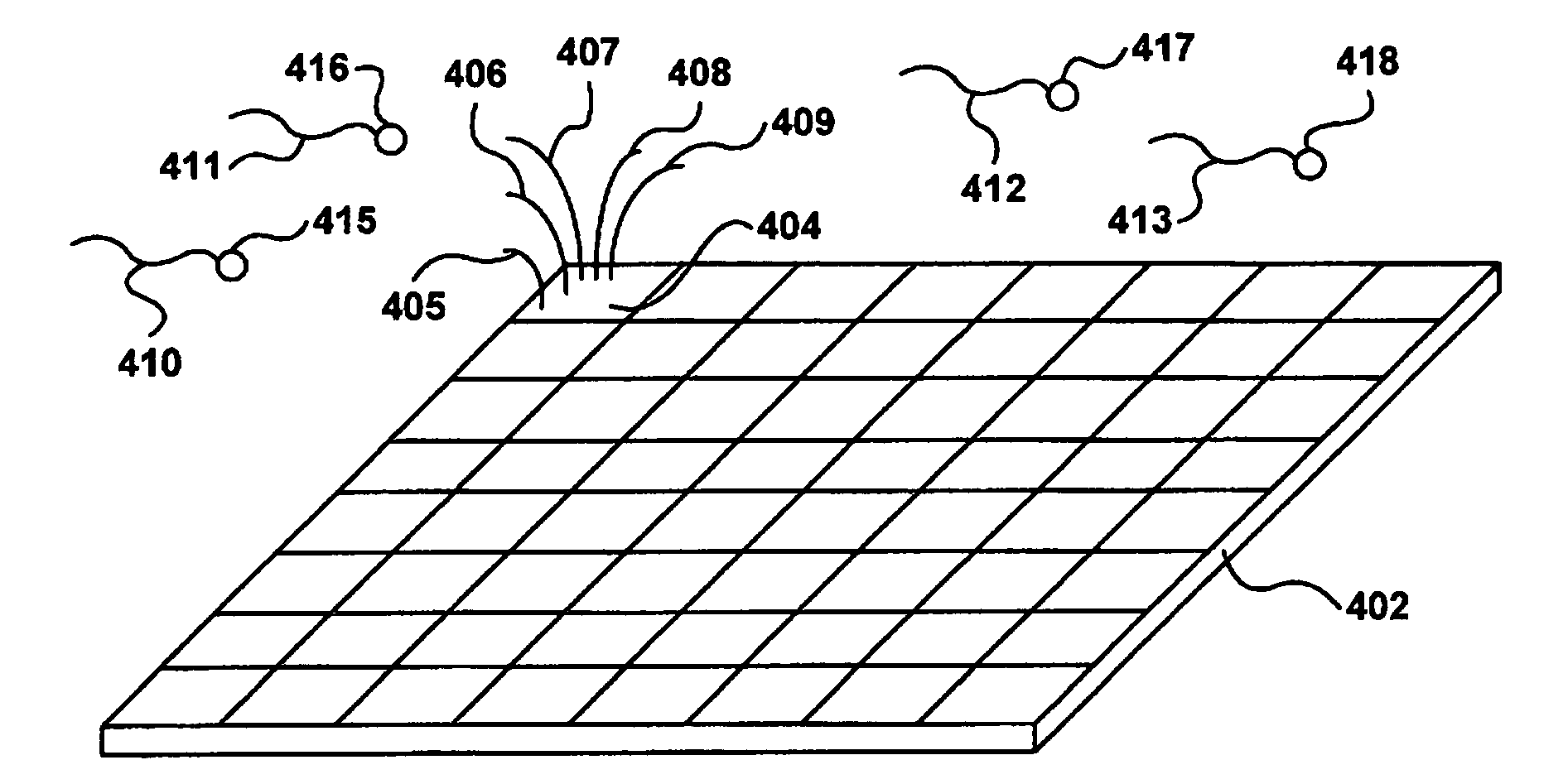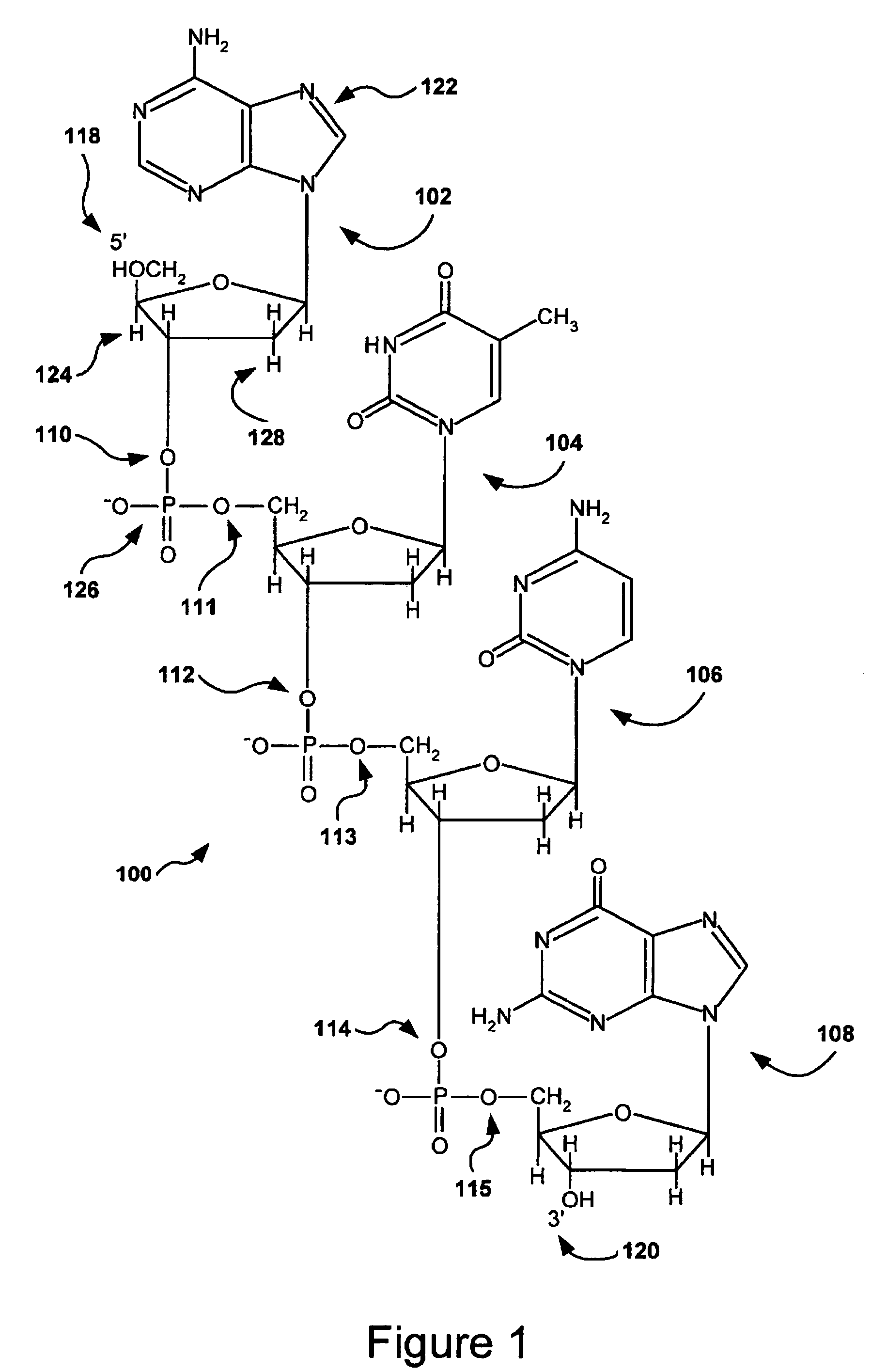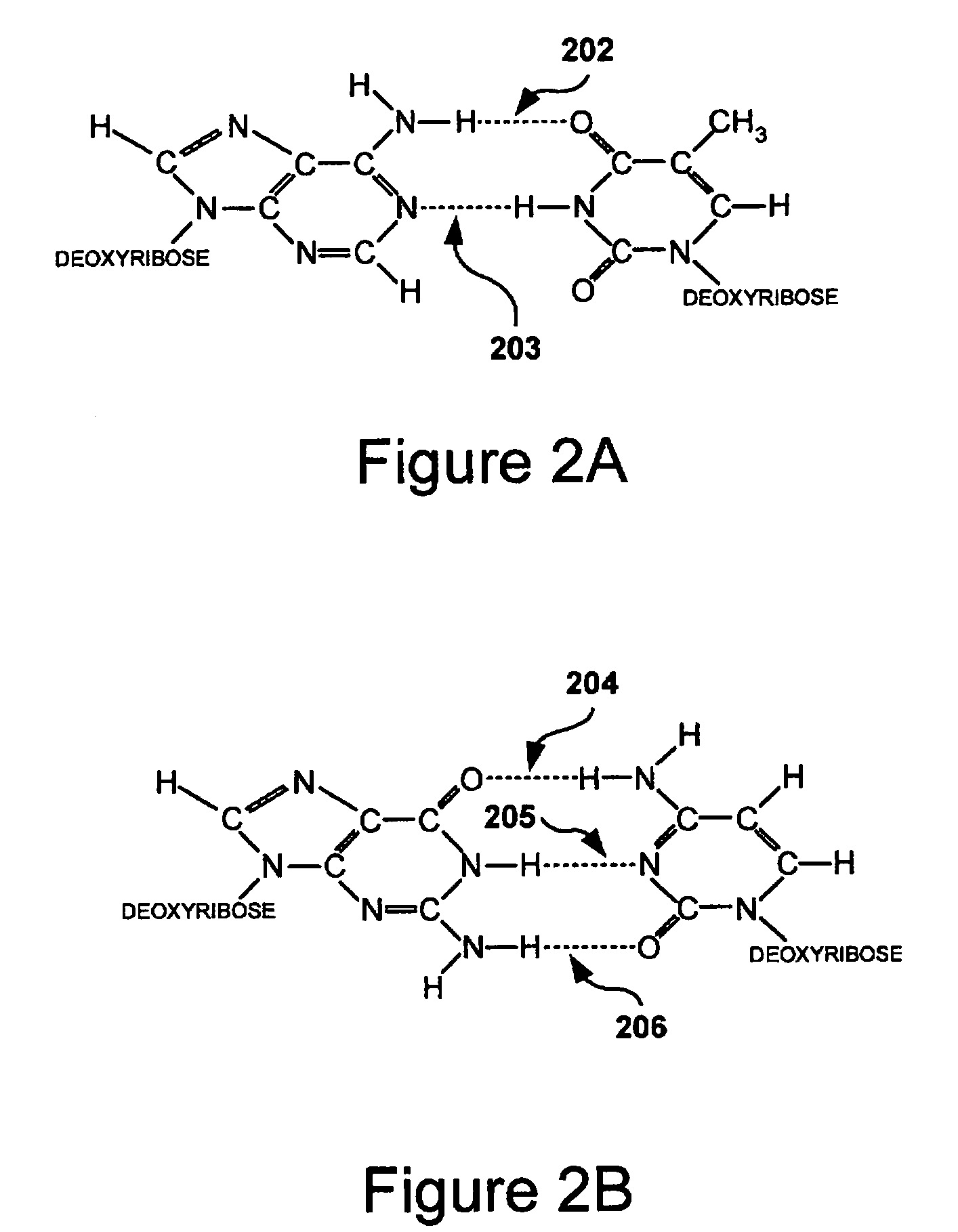User interface for molecular array feature analysis
- Summary
- Abstract
- Description
- Claims
- Application Information
AI Technical Summary
Benefits of technology
Problems solved by technology
Method used
Image
Examples
Embodiment Construction
[0033]One embodiment of the present invention provides a GUI to allow a data analyst or other microarray user to view pixel intensities corresponding to a feature of a molecular array and to easily and intuitively determine a weighting function to apply to the pixel intensities to properly weight the pixels prior to integration of the pixel intensities to produce a feature signal. In a first subsection, below, addition information about molecular arrays is provided, for the reader unfamiliar with molecular-array technologies. This first subsection can be skipped by those familiar with molecular arrays. A number of embodiments of the present invention are discussed, with reference to FIGS. 11A-18F, in a second subsection. Finally, an implementation of an embodiment of the present invention is included in Appendix A.
Additional Information About Molecular Arrays
[0034]An array may include any one-, two- or three-dimensional arrangement of addressable regions, or features, each bearing a...
PUM
 Login to View More
Login to View More Abstract
Description
Claims
Application Information
 Login to View More
Login to View More - R&D
- Intellectual Property
- Life Sciences
- Materials
- Tech Scout
- Unparalleled Data Quality
- Higher Quality Content
- 60% Fewer Hallucinations
Browse by: Latest US Patents, China's latest patents, Technical Efficacy Thesaurus, Application Domain, Technology Topic, Popular Technical Reports.
© 2025 PatSnap. All rights reserved.Legal|Privacy policy|Modern Slavery Act Transparency Statement|Sitemap|About US| Contact US: help@patsnap.com



